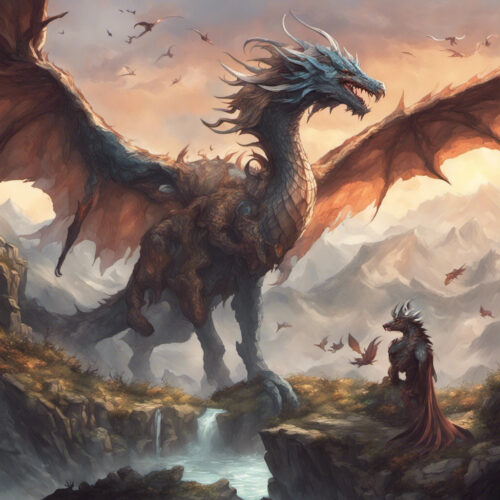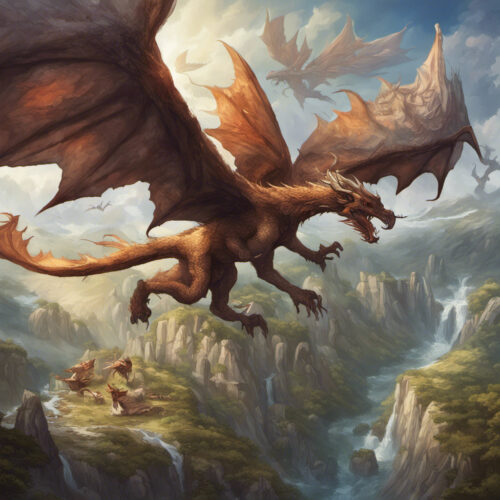Welcome to the enthralling world of wyverns, magnificent and awe-inspiring creatures that have captivated our imaginations for centuries. With their scaly bodies, colossal wings, and fiery breath, wyverns have become an integral part of mythology and folklore around the globe. In this article, we will delve into the alluring mysteries that surround these mythical beasts and explore their place in different cultures and legends.
The Origins of Wyverns
Wyverns are a specific type of dragon with distinct characteristics that set them apart from their legendary cousins. While dragons typically possess four legs and a set of wings, wyverns are depicted with two legs and two wings, making them more nimble and agile in flight. The origins of wyverns trace back to ancient European folklore, where they were often seen as symbols of strength, power, and protection.
According to legends, wyverns were believed to guard hidden treasures and sacred places. Their fearsome nature and tireless guardianship made them the perfect sentinels for ancient castles and fortresses, as they soared through the skies with unmatched elegance and grandeur.
Wyverns in Mythology and Culture
Wyverns have weaved their way into numerous mythologies and cultural beliefs across the world. In European folklore, they were considered harbingers of war and destruction, serving as the ferocious steeds of warriors and knights. These mythical creatures were often associated with great battles and heroic quests, adding a touch of enchantment to legendary tales.
The influence of wyverns is not limited to Europe alone. In Chinese mythology, they hold a significant place as celestial beings associated with the element of water. Chinese wyverns were believed to control rivers and rain, bringing fertility and prosperity to the land. They embodied harmony and balance, often portrayed alongside other mythical creatures like the phoenix and the dragon.
Wyverns also appear in the folklore of the indigenous Ainu people of Japan. Known as “kamui,” these benevolent creatures were revered as protectors of the natural world. Ainu folklore often depicts wyverns as gentle and wise beings, guiding humans towards harmony with nature. Their presence symbolized the delicate balance between mankind and the environment.
The Wyvern Connection: Dragons and Wyverns
Dragons and wyverns share similarities in their depiction and symbolism, often leading to confusion between the two mythical creatures. The distinction, however, lies in their physical attributes. While wyverns possess two legs and two wings, dragons are characterized by their four legs and two wings. This key difference has sparked ongoing debates among dragon enthusiasts and scholars, each having their theories and interpretations.
The Intrigue of Wyvern Lore
Wyverns continue to captivate our modern world through various forms of media, immersing us in their mesmerizing tales. From epic fantasy novels like J.R.R. Tolkien’s “The Hobbit” to popular video games like “The Witcher,” wyverns have become beloved creatures in the realm of storytelling. Their mysterious allure and formidable presence inspire awe and wonder, igniting our imagination and pushing the boundaries of our creativity.
If you’re curious to witness the awe-inspiring majesty of wyverns in motion, take a moment to watch this incredible YouTube video showcasing breathtaking aerial footage of these magnificent creatures:
Immerse yourself in the grandeur of these legendary creatures and let your imagination soar. Wyverns stand as a testament to the enduring magic and fascination humans have with mythical beings.
For further exploration into the fantastical realm of wyverns, we recommend visiting the following external links:



